18 Omnichannel Marketing Examples (From Each Industry)
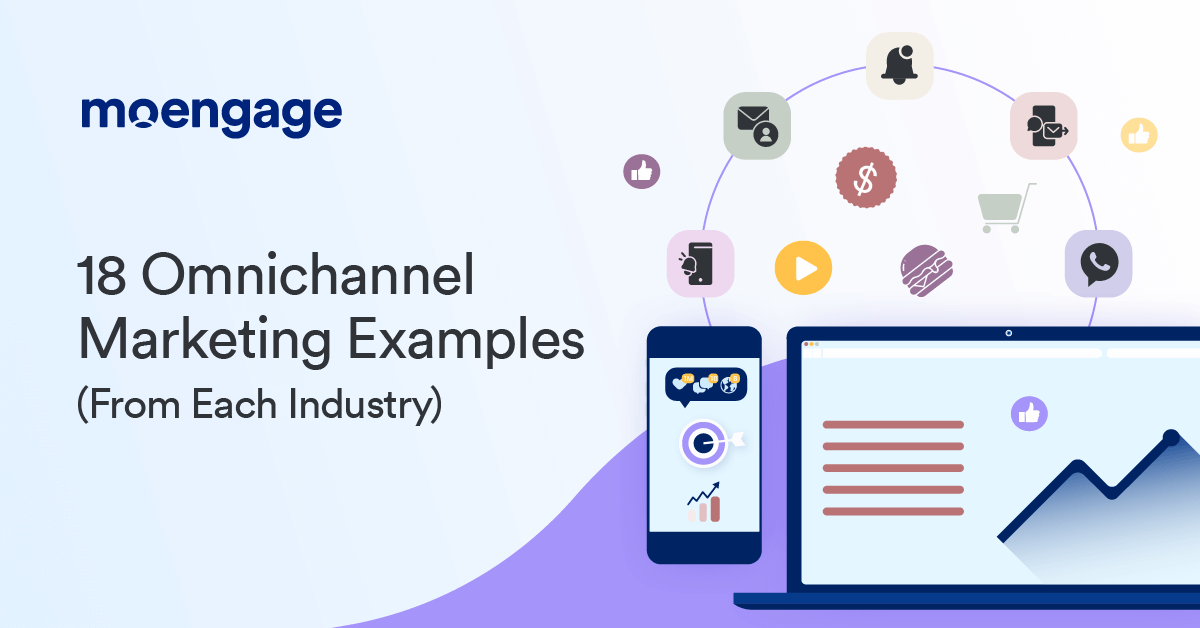
Reading Time: 19 minutes
In the strictest sense, omnichannel marketing means offering customers a seamless brand, message, and experience across every channel (including print, email, online, and in-store).
Customers might interact with a brand via a blog, a tweet, an SMS, or a Facebook post. In an omnichannel setup, brands must deliver consistent messaging across all online and offline touchpoints and provide seamless customer experiences.
As a customer moves from a print ad to a social media platform, or an email to a webpage to a brick-and-mortar store, or an AI chatbot to a phone call, every experience must be consistent with your branding and core messaging. If it’s not, customers will leave your brand in favor of another one that offers a unified browsing and buying experience.
Many popular brands have mastered the strategy necessary for a successful omnichannel marketing campaign. We’ve collected examples across five different industries for you to learn from, and get inspiration for your own omnichannel campaigns.
We’ll cover omnichannel marketing examples in the following industries:
- Banking & Financial Services (BFSI)
- Retail & Ecommerce
- Media & Entertainment
- Quick-Service Restaurant (QSR), Fast Food, & Fast Casual Restaurants
- Travel & Hospitality
Let’s start with some of the biggest brands mastering omnichannel marketing in the BFSI industry.
3 Omnichannel Marketing Examples from Banking & Financial Services
Banks and financial institutions (FIs) have been slower in adopting digital marketing and omnichannel strategies, partly because there was less demand and more customer hesitancy around online banking security.
The sector’s sensitivity, higher regulations, more scrutiny, and the resulting limitations have also made it much harder for financial services to deliver omnichannel experiences. Because of the private nature of finances, FIs need to be hyper-sensitive when they communicate with customers, select channels, and decide what information to communicate with their customers and when.
However, with the rise of Fintechs, a growing trust in digital tools, and a need for convenient, digital solutions, customers expect the same customer experience from their financial institutions as from ecommerce and food delivery services.
Below, we look at some examples of omnichannel marketing strategies and campaigns that leading banks and FIs have run.
1. Bank of America keeps customers in the loop with real-time transactional alerts
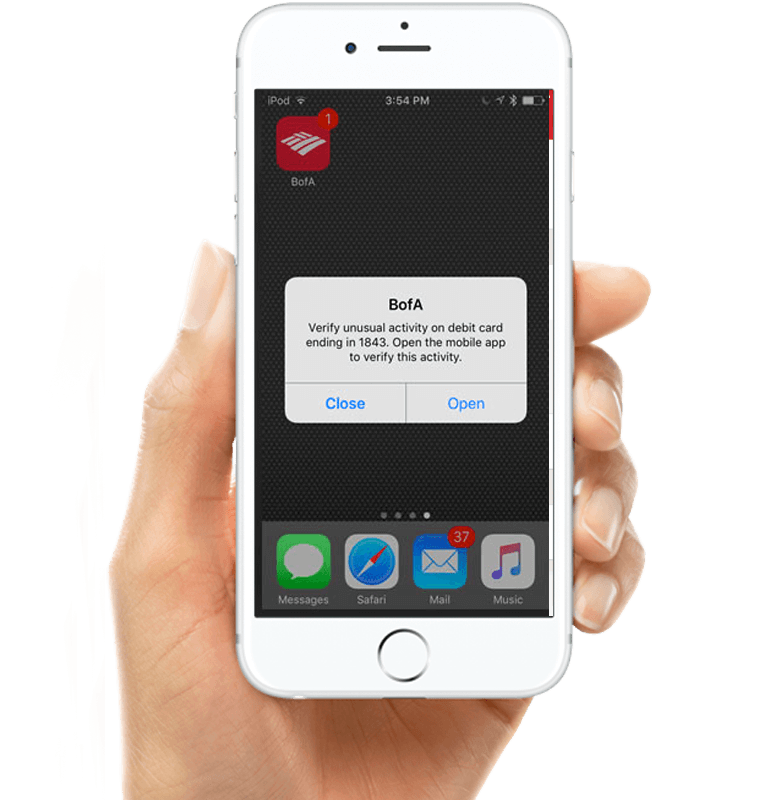
Image Source: Bank of America
Bank of America has been committed to providing customers with best-in-class digital experiences for years. In 2023, Bank of America invested $3.8 billion to fund new technologies in an effort to improve generative AI capabilities, and they plan to do the same in 2024.
To meet the fast-paced demand of customers, Bank of America uses personalized, real-time alerts that help clients know when to log in and manage their finances.
Their efforts are centered on alerts that provide insights on account balances, deposit available balances, and virtual debit card usage, helping customers stay on top of their finances. But Bank of America didn’t stop there; they took things further by introducing Erica — their AI-powered virtual financial assistant — in 2023.
Erica gives customers an intelligent point of contact who can answer common questions and provide customer support. Erica is just one of many components of Bank of America’s omnichannel experience, connecting customers to real-time updates that help them manage their finances more effectively.
Key Takeaways:
By sending customers real-time transactional alerts on their preferred channels, BofA was able to significantly improve online engagement and increase customer satisfaction. Using personalized omnichannel communication, Bank of America generated 23.4 billion customer interactions in 2023 to achieve an 11% increase in customer engagement from 2022.
Their virtual financial assistant, Erica, has 18.5 million users, a 12% increase over the previous year, setting their digital experience apart from competitors.
2. Mashreq Neo boosts debit card activation using omnichannel experiences
Mashreq is the oldest privately owned bank in the UAE and one of the oldest in the entire Middle East. Mashreq Neo is their flagship digital banking solution, connecting customers to instant banking services, personal loans, and more.
Struggling with data silos, Mashreq Neo lacked a centralized platform to analyze and optimize customer engagement. Despite numerous downloads, they failed to drive active engagement with customers because account activation was not accurately mapped or streamlined across digital touchpoints.
By analyzing times with peak and low activity levels on the app, they were able to identify the leaks in their funnel.

Using cohort retention analysis, they could segment customers based on where they were in the onboarding process, effectively targeting the customers who needed additional support. They then drove onboarding journey workflows that leveraged in-app messaging, push notifications, email, SMS, and IVR as part of a unified, omnichannel marketing strategy.
This empowered Mashreq Neo to understand the customer lifecycle, minimize manual intervention, and create ‘Wow’ moments for their customers that lead to retention.
By making their mobile app the center of the customer journey and integrating it into an omnichannel strategy, Mashreq was able to improve onboarding and more effectively engage customers in high-risk buckets. This enabled them to track drop-offs and develop customer journeys that mitigated churn.
Key Takeaways:
After deploying an omnichannel experience for customers using MoEngage, Mashreq Neo saw a 16% boost in debit card activations and a 50% increase in click-through rates (CTR). By closing gaps in the onboarding funnel, they were able to onboard 23,000 customers in just three months.
3. Monzo integrates online and offline engagement with their double-decker bus campaign
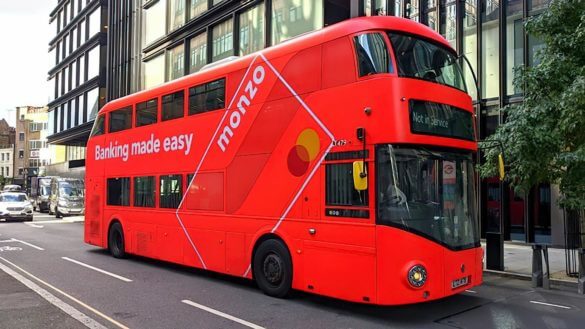
Image Source: A Gallery: 13 Unconventional Bank Marketing Campaigns, The Financial Brand
Monzo didn’t just advertise on an iconic double-decker London Bus, they turned the entire bus into an advertisement that seamlessly integrated online and offline engagement.
First, they fully wrapped a London double-decker city bus with Monzo advertising. Next, they gave this bus its very own Twitter account.
Lastly, they created an online contest that asked customers to photoshop the Monzo bus in funny, wacky, and innovative ways, featuring the best submissions on the bus’ Twitter account.
This incentivized active online engagement with the campaign, increased brand awareness online and around the city, and seamlessly blended offline and online interactions.
Key Takeaways:
By leveraging a traditional print advertising campaign, Monzo was able to encourage in-person engagement while also transferring that engagement online. Customers were incentivized to participate and tune in to see the top submissions each day.
7 Retail & Ecommerce Omnichannel Examples
According to feedback from ecommerce and retail brands, their top objectives are finding new customers and increasing customer engagement and loyalty.
Leading ecommerce brands don’t just use their omnichannel strategy to get a one-time conversion. They leverage it to achieve long-term, sustainable growth that builds a loyal customer base that will convert regularly and frequently.
To help you execute a flawless omnichannel marketing campaign, we look at some of the top omnichannel strategies from leading ecommerce and retail brands below.
1. Lululemon Studio focuses on building community over conversions
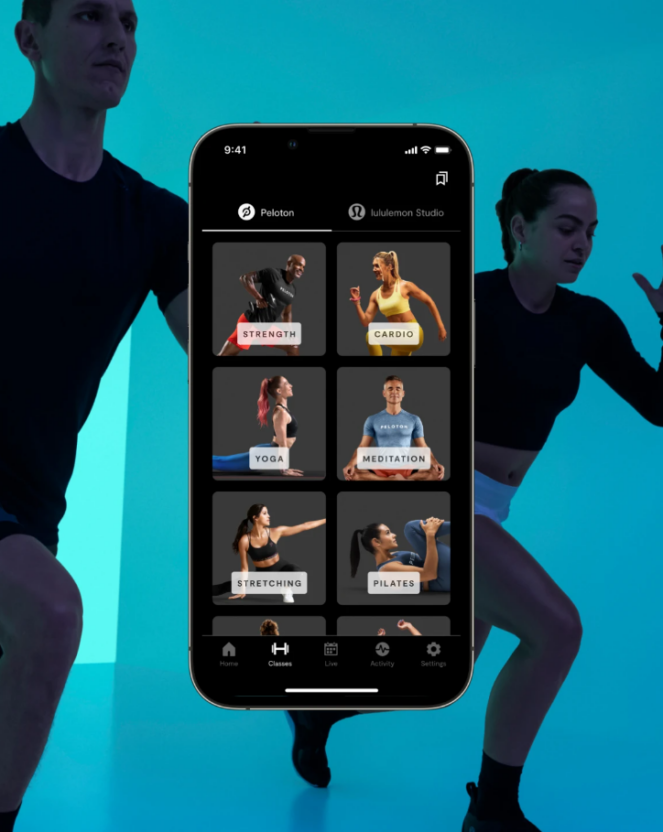
Image Source: lululemon Studio
Commonly known for its yoga apparel, lululemon is an American-Canadian company that sells premium athletic clothing.
Rather than creating the standard ecommerce mobile app that extends their online shop to mobile devices, lululemon did something far more creative to elicit engagement.
They focused on providing a mobile app experience centered around fitness habits and activities. With lululemon Studio, members get access to thousands of classes operated by 40+ world-class trainers, with more being added each week.
To promote the new lululemon Studio, they even hosted a Studio Tour consisting of pop-up workout locations at shopping malls across America and Canada.
This integration, along with periodic community meet-up events, enables lululemon to seamlessly blend online and offline experiences and keep customers engaged with their brand (even when they aren’t buying!).
This strategy is well-poised to elicit regular, consistent engagement. Customers aren’t just attracted when they’re looking to buy, but every time they exercise.
And each time, they’re exposed to lululemon’s brand. Lululemon turns this into conversion opportunities by integrating buying opportunities into the experience. Membership is tied to shopping benefits, including 10% off gear, first dibs when new gear is released, and additional perks.
Key Takeaways:
Lululemon Studio is a testament to building a solid community of loyal customers who regularly and actively engage with your brand. While not every interaction is focused on driving a conversion, it ensures lululemon is the first brand customers go to for fitness products to accompany their fitness journey.
More than 20 years after its inception, lululemon is still finding ways to innovate. Thanks to the ingenuity of omnichannel marketing initiatives like lululemon Studio, lululemon expects to double its revenue (to $12.5 billion) by 2026.
2. Sephora enhances the in-store experience with omnichannel functionality
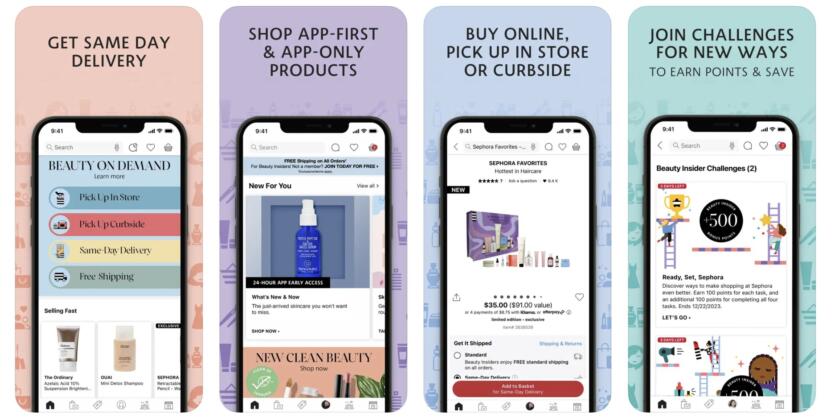
Image Source: Apple App Store
Sephora was one of the first brands to embrace the mobile-first world full-heartedly, leveraging this technology to build customer-centric experiences that put the customer first (and sales second).
In 2017, well before the pandemic drove other companies to digitize, Sephora used augmented reality tech to allow customers to virtually test makeup at home. At that time, they were also already allowing their customers to use their mobile devices to enhance their shopping experience both at home and in-store.
After getting a makeover from a staff member in-store, Sephora sends the customer a Digital Makeover Guide with a list of all the products they use, complete with instructions on what these products do and how to use them.
The technologies they extend to customers don’t just allow Sephora to sell to them but instead focus on supporting the customer journey and improving their overall shopping experience.
Tools like the Sephora Visual Artist act as a technical aid for in-store shoppers, seamlessly bridging the online and offline experience for customers.
Rather than deploy standard sales campaigns, they’ve leveraged their mobile app to help customers solve their biggest problem, sifting through the thousands of products to find the ones that actually work for them.
Their rewards program — the Beauty Insider Program — is also one of the most easily accessible, well-managed, and engaging experiences in ecommerce, with exclusive, personalized offers for members.
This is just another way Sephora is digitizing the experience and providing customers with a variety of means of connecting with their brand, all with a familiar experience.
Key Takeaways:
Sephora’s omnichannel strategy ensures customers get a best-in-class experience and feel satisfied not just with what they bought but with the buying process itself.
They don’t just deploy omnichannel marketing campaigns that resonate with their audience, but they use mobile devices as a way of streamlining and optimizing the entire shopping experience, both online and in-store.
This customer-centric approach has paid off over the years. In 2023, Sephora generated $2.7 billion in the U.S. alone, the most sales of any company in America’s beauty ecommerce market.
3. Target uses Pinterest Lens to generate high-intent conversion opportunities
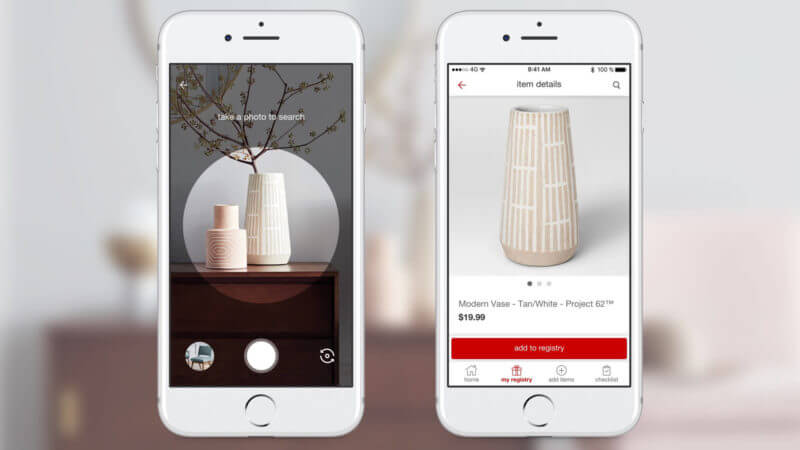
Image Source: Pinterest signs visual search & advertising deal with Target to license its Lens technology, MarTech
In 2017, Target partnered with Pinterest to integrate their Pinterest Lens into their app. Users could snap a photo of any item and get information on whether Target had a similar product for sale, as well as get product details and pricing information, and even make a purchase.
This meant that regardless of where a customer was, they were always one photograph away from connecting to Target’s store and finding an alternative to what they were currently shopping for.
This helps keep Target top-of-mind whenever a consumer is shopping, but even better still, it makes it extremely easy for customers to price-check items while shopping at Target’s competitors. This allows Target to potentially steal sales from its competitors, even while customers are shopping at those other stores.
Notably, these customers have a high intent to buy, as they’re already looking up the availability of these products. Making this process as simple for customers as possible limits friction in the buying process and helps Target not only generate a high-value lead but also a customer that’s likely to convert.
Key Takeaways:
Bridging in-store and digital shopping functionality enabled them to enhance their omnichannel customer experiences.
4. Walgreens designs their mobile app to save customers time
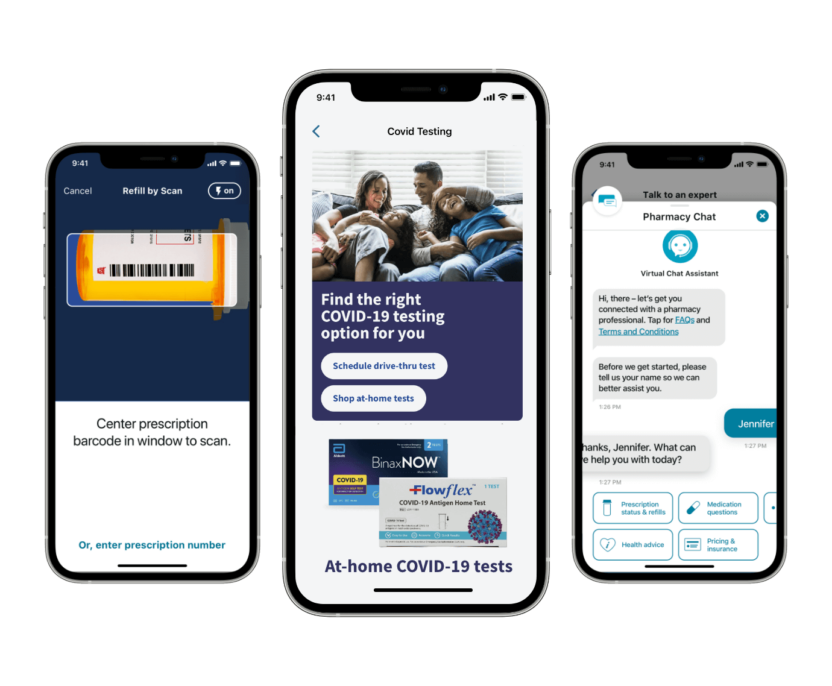
Image Source: Walgreens
With over 9,500 stores and more than 8 million shoppers in-store and online, Walgreens struggled to meet the on-demand shopping expectations of its customers because of shortcomings in its store-level inventory management system.
When Walgreens designed its app, it focused on building an omnichannel shopping experience that supported its customers and alleviated the burden on staff. They also used these online mobile interactions to get customers in-store.
Customers can use the Walgreens app to submit prescription refill requests anytime without calling the pharmacy. The app would send the user an alert when their next refill was due or when their prescription needed to be refilled.
Through cross-channel coordination, the Walgreens app reduced wait times and hold times while scheduling pick-ups, improving the overall customer experience and improving operational efficiency for staff.
Key Takeaways:
By taking an omnichannel approach that streamlined the in-store, mobile, and online shopping experience for customers, Walgreens increased digital sales to $3.7 billion in 2020, up 9% from 2019.
Their mobile app has been downloaded more than 60 million times, and it currently facilitates approximately 33% of all prescription refills, taking a massive burden off in-store locations and significantly reducing wait times.
5. Lifestyle-improved customer retention using a dynamic engagement strategy
Lifestyle, one of India’s leading fashion destinations, has made a name for itself by providing hassle-free shopping experiences that customers love.
Having experienced a lot of success operating omnichannel campaigns on mobile and desktop sites, they immediately noticed the shift to mobile shopping.
They quickly shifted their focus and were able to increase mobile app adoption. However, despite boasting over 1 million app installs, they still struggled to activate that user base regularly, with only 15 thousand active users.

Using MoEngage Flows, they were able to identify their two most significant gaps. First, many users were inactive after opening the app for the first time. Second, many users dropped off after searching or adding products to their cart.
To close these gaps, Lifestyle implemented a purchase funnel-based engagement strategy to ensure users were engaged at every step of the purchase funnel using smart communication that automatically engages customers across email, push notification, and SMS at various stages in the funnel.
They also used MoEngage’s RFM Analysis to identify which segments to focus on for the greatest impact, isolating price-sensitive, loyal, and lost customers and serving them targeted campaigns that speak to their individual needs and buying intent.
Key Takeaways:
By deploying this omnichannel strategy with MoEngage, Lifestyle was able to boost conversion rates by 4x, reduce the conversion time by 170%, reduce cart abandonment by 20%, and improve retention rates by 30%.
3 Examples of Omnichannel Marketing Campaigns from Media & Entertainment Giants
Media and entertainment companies are still focused on conversions, but for many of these companies, conversions look drastically different than other industries (and require a different approach).
Unlike ecommerce and retail companies, media and entertainment brands sell subscriptions, ad space, or content, relying far more heavily on subscribers who regularly consume their media.
For this reason, media and entertainment brands are often heavily focused on attracting, focusing, and retaining customer attention. Below, we look at successful omnichannel strategies from leading media & entertainment brands.
1. Disney flawlessly blends online and offline experiences
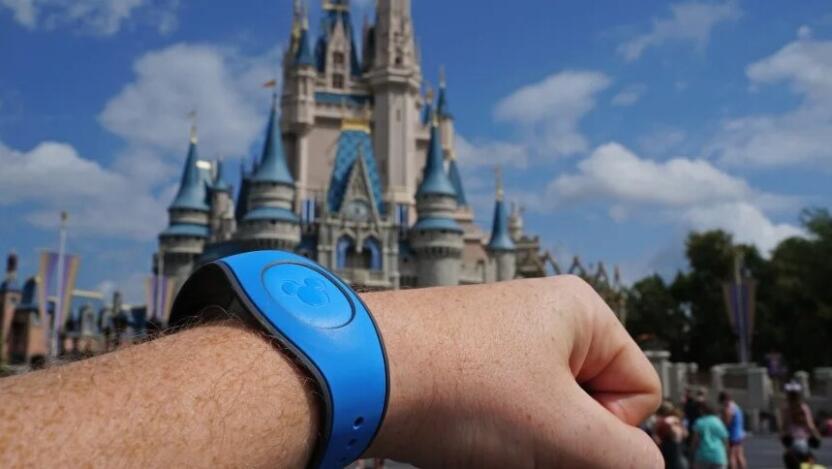
Image Source: A day out with Disney’s MagicBand 2, Wareable
Disney makes sure that every single interaction you have with their brand is magical, whether you’re waiting in line for a ride or online for tickets.
With every touchpoint integrated into the customer experience, Disney is a shining example of an omnichannel strategy at work.
Starting online, the MyDisneyExperience lets you manage everything about your travel booking, all in a single digital place. This includes making theme park reservations, personalizing your itinerary, booking additional experiences, making dinner reservations, and buying items you need for your visit.
Once at the park, visitors can use the mobile app to look up rides and attractions, check wait times, and plan out their route. The MagicBand wristband enables visitors to access all the amenities they’ve booked, allowing them to enter parks, check in at FastPass entrances for rides, unlock their hotel room, charge food and beverages to their account, and access ride photos.
Key Takeaways:
Every aspect of the customer experience is consistently branded, carefully mapped out, and effortless to use. Online and offline experiences are seamlessly blended together by taking advantage of physical and digital touchpoints.
Each element is designed to make the customer’s experience convenient and consistent, encouraging engagement and increasing satisfaction.
2. Chess.com reactivates dormant customers with personalized mobile push notifications
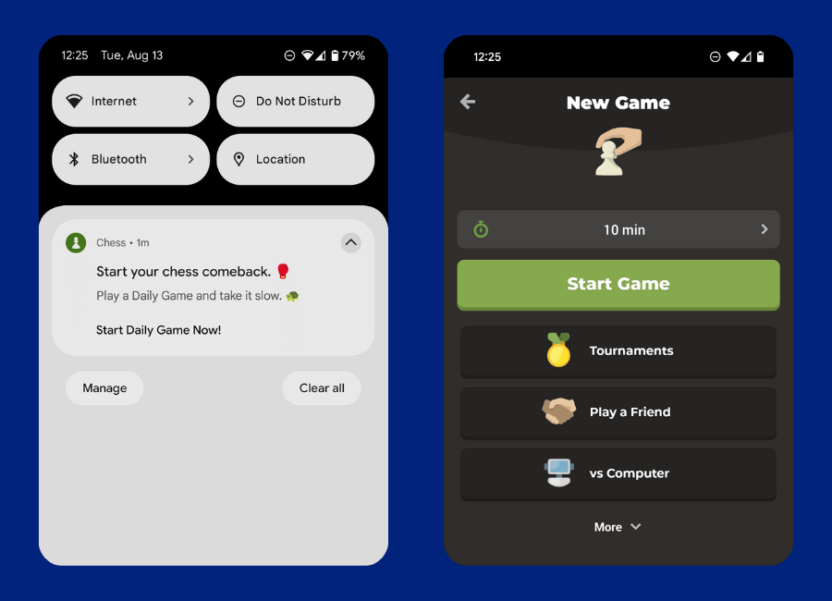
After a player has been inactive for several months, Chess.com automatically initiates an omnichannel reactivation campaign designed to get them to return to play a match.
Since the customer was playing via their mobile device, a mobile push notification was sent to ensure delivery and increase the open and click-through rates. The message is lighthearted and playful, using emojis to politely ask them to come back and play a single match.
The customer gets a streamlined experience; by simply clicking the link, they are taken to a pre-loaded game that is ready to start.
Customers can sign in on the mobile app or through their web browser on desktop, getting the same familiar experience no matter how they engage.
Chess.com also sends customers emails about relevant product updates, upcoming events, and more to ensure customers are engaged effectively across channels.
Key Takeaways:
Chess.com intentionally used mobile push notifications to target customers using the mobile app to play, as communicating with them via that device is more likely to elicit engagement.
By initiating a targeted sequence, they increase the chances of a customer reaching the end of the funnel and returning to being a daily active user (DAU). Using segmentation, Chess.com can use the right messaging (at the optimal time) to elicit a reactivation.
In December of 2022, Chess.com hit a milestone of 100 million users. More impressively, as of April 2023, Chess.com boasts approximately 11 million daily active users, showing they can actively engage a large number of customers.
3. Formula 1 drives engagement by promoting omnichannel options
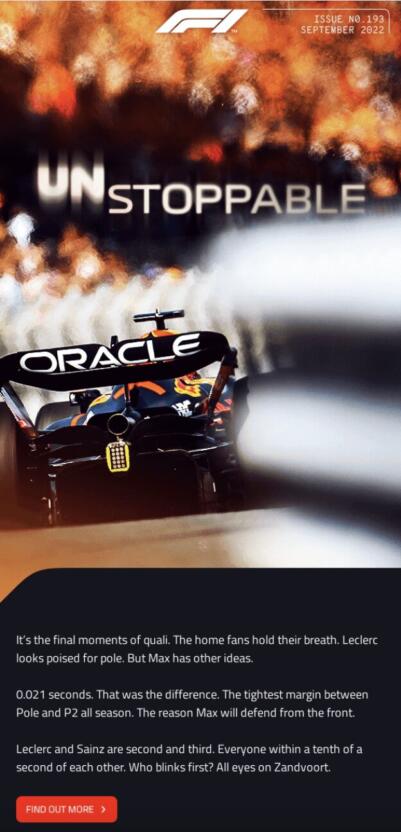
Image Source: Really Good Emails (click here to see the full example)
Whether they profit from subscriptions or ad revenue, media and entertainment companies focus on driving engagement with their content.
But with modern consumers consuming content in a variety of ways on a multitude of different channels, it’s challenging to make sure you meet them in all those places. As you can see in this omnichannel marketing example, Formula 1 uses email to keep customers up-to-date on the sport, as well as incentivize regular engagement across other channels.
Their weekly newsletter email updates the most recent race, connecting you to an article that summarizes the event and a video highlight. They also promote their subscriptions, tickets to live events and promote other content that customers can engage with on the website or via the mobile app.
Key Takeaways:
Formula 1 makes it easy for customers to interact via their preferred channel. They also promote omnichannel engagement using targeted email campaigns that connect customers to these other channels seamlessly and effortlessly so they can stay in the know.
4 Examples of Omnichannel Marketing from QSR, Fast Food, & Delivery
QSR brands don’t thrive off one-time purchases; they need customers to regularly buy from their establishment. For this reason, fast food and QSR brands are incredibly focused on driving customer retention and developing brand loyalty.
Innovative companies focus intently on customer satisfaction, using their omnichannel strategy to craft customer-centric experiences and campaigns that resonate with their audience.
QSR brands increasingly rely on rewards programs and exclusive offers to maximize engagement and cement themselves as customers’ preferred choices.
Below, we look at how leading QSR brands execute flawless omnichannel marketing campaigns for their customers.
1. Starbucks rewards customers for their loyalty
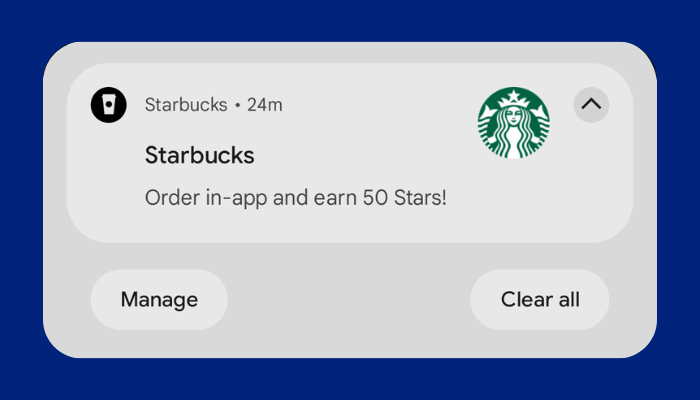
Starbucks’ loyalty program — Starbucks Rewards — is the key driving force in the company’s omnichannel marketing strategy, keeping customers engaged through their mobile devices and invested in earning points.
Starbucks Rewards is intuitively built into everything they do, and it works seamlessly across all brand touchpoints; whether the customer is using the website, the mobile app, or buying in-store, they can always collect and use their rewards points easily and effortlessly.
They can also load their Starbucks card with more funds from anywhere, so it’s easy to buy Starbucks products however they prefer.
To increase the quality of its rewards offerings, Starbucks leveraged its Deep Brew data analytics and AI platform to segment customer cohorts more effectively so it could deliver personalized Rewards offers.
They also crafted mobile-exclusive offers that drastically increased app engagement and usage.
Key Takeaways:
In Q1 of 2024, the Starbucks Rewards loyalty program hit a staggering 34.3 million active U.S. users, marking a 13% increase from the previous year. By making the Starbucks Rewards an integral part of their mobile app experience, as well as offering special offers to rewards members, Starbucks was able to encourage consistent app usage with their customers, which led to daily engagement and repeat sales.
2. McDonald’s provides customer support messaging that also converts

Image Source: Really Good Emails
To keep customers in the loop — and engaged — with their MyRewards program, McDonald’s deploys an omnichannel campaign that activates them through the mobile app, using mobile push, and even via email.
Each month, McDonald’s provides their rewards members with a monthly statement, which summarizes their monthly activity. This keeps customers updated on their account status, as well as the rewards they have.
It also alerts them of potential offers or unspent rewards, ensuring customers take advantage of them while they can.
But it doesn’t stop there; McDonald’s carefully weaves engagement opportunities throughout the email, enabling its customers to connect in different ways.
For example, customers are incentivized to link a payment card to their mobile app, immediately redeem points in-app for food, and complete their profile for a birthday surprise.
Key Takeaways:
McDonald’s takes a simple alert email meant to improve customer support and turns it into an opportunity to further engage the customer and cement them as a brand loyalist.
Their campaign improves the quality of their overall experience and creates avenues to gain more details about the customer and directly market to the customer.
3. Chipotle increases customer service with online order and in-store pickup
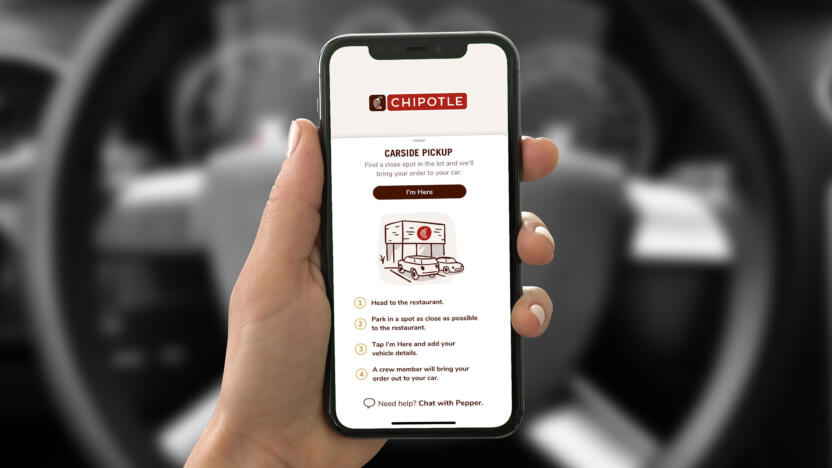
Image Source: Chipotle Tests Curbside Pickup, Chipotle
The concept of ordering online and picking up in-store is not new by any means. However, leading QSR brands are finding ways to innovate and streamline the experience for optimal convenience.
Back in 2021, Chipotle revamped their order online, pickup in-store process by using the mobile app to facilitate the process. Customers can easily order online via the mobile app, and then let the restaurant know when they are leaving for pick-up.
The store tracks their location so they can prepare their meal to be ready at the optimal time. This way, the customer doesn’t arrive and have to wait for their meal or arrive to find a cold meal waiting for them.
The customer can also track the order status from their mobile device. Ultimately, this gives the customers a streamlined experience they can easily manage from a single place — the mobile app. By having food that’s prepared for the right time, customers get a fresher, better-quality meal.
Key Takeaways:
Chipotle customers get a simple, convenient experience that keeps them engaged and informed at each step of the process. They can easily order online and pick-up in store, managing the entire process from their mobile device. Staff can also see where the customer is, helping them perfectly time the order and improve operational efficiency.
4. Country Delight capitalized on traffic during the pandemic
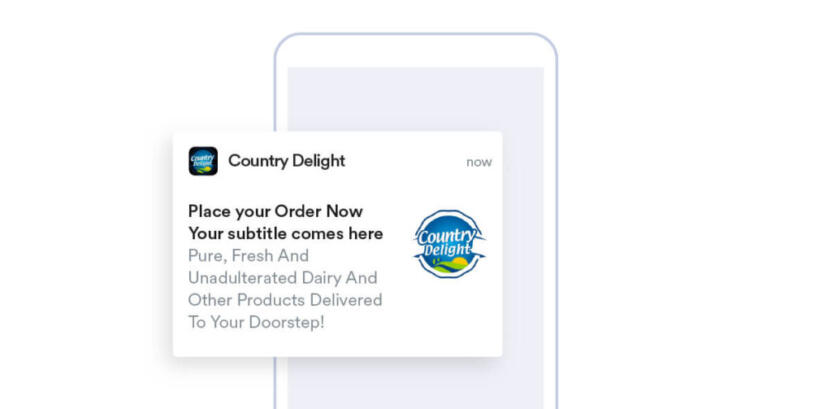
The farm-fresh milk delivery app Country Delight experienced a surge in traffic during the COVID-19 lockdown period. Unfortunately, despite this swell in traffic, they were struggling to take advantage of it as they grappled with churn.
To capitalize on this influx of traffic, Country Delight used MoEngage to understand user events so they could effectively engage customers based on their past behavior.
They were able to channel deep customer insights into personalized cross-channel campaigns that activated customers via SMS and mobile push to boost engagement. This allowed them to achieve their goal of reducing funnel-level churn and getting customers to complete their subscription journey.
Key Takeaways:
Using MoEngage’s Customer Engagement Platform to orchestrate seamless customer journeys and build high-performing conversion funnels empowered Country Delight to increase DAUs by 2.5x, retain 50% of their existing customers, and improve their conversion rate by 20%.
3 Omnichannel Campaign Examples from Travel & Hospitality Brands
Booking travel is a complex process, making it hard for brands to orchestrate seamless omnichannel customer journeys.
Travel and hospitality brands looking to stand out need to provide customers a seamless experience that lets them manage as much of this process as possible. Not only will this customer-centric approach make the entire process easier for customers, but it will also give your brand more opportunities to engage your customers effectively.
Below, we look at omnichannel campaign examples from top travel and hospitality companies.
1. Travelodge sends real-time notifications to keep customers informed

Image Source: Really Good Emails
Like many travel booking sites, Travelodge provides customers with an email confirmation that verifies their booking is complete. It provides the customer with all pertinent information about their booking so they can verify it’s been done correctly.
It also conveniently connects customers to the app, where they can manage their booking. Customers can get other information about their booking with a single click from the email, such as hotel details or parking information.
They can even cancel their booking directly by email. With an easily accessible FAQ section, customers can find answers to the most common customer support questions, providing them fast, simple access to customer support that supports them through the experience and alleviates the need for support staff.
Key Takeaways:
Providing customers with notifications about their bookings and travel accommodations alleviates anxiety and improves the overall experience. Customers can seamlessly transition between the email and mobile app to effectively and conveniently manage their booking, getting the same experience on desktop and mobile.
2. Singapore Airlines leverages an in-app experience
Video Source: #SingaporeAir Mobile App: Tips for Seamless Travel, YouTube
Airline travel is naturally inconvenient, and leading airlines are trying to do everything they can to make that experience as straightforward and frictionless as possible.
For years, Singapore Airlines has run an impressive omnichannel strategy that weaves together a seamless experience for customers, enabling them to do everything related to their travel using the Singapore Airlines’ mobile app.
Customers can search for available flights, book their trip (while enjoying app-exclusive fares), pay quickly and easily with a mobile wallet, and get a booking confirmation using the mobile app, so all their information is in a single place.
When it’s time to travel, they can easily check in and download their boarding pass. Customers can also download their reading list in the app and select the movies and shows they want to watch in flight before they depart.
They can even book a ride to the airport. Once in the air, they can also fully control inflight entertainment from their mobile device.
Customers are rewarded with an incredible customer experience that they can manage entirely from a single place, making it convenient and easy to manage.
Key Takeaways:
Singapore Airlines understands that airline travel can be a daunting process for customers. By streamlining the process on a single platform, they make it highly accessible for customers and drastically improve customer satisfaction.
By considering everything from check-in to in-flight entertainment, customers get a fun, enjoyable experience that completes their journey. In turn, this leads to loyal customers who are likely to repeatedly book with Singapore Airlines.
After completing rebuilding the app, Singapore Airlines saw a significant increase in booking and check-in flows, reducing transaction time by up to 60%.
3. OYO Rooms uses Push Amplification & sees a 44% boost in delivery rates
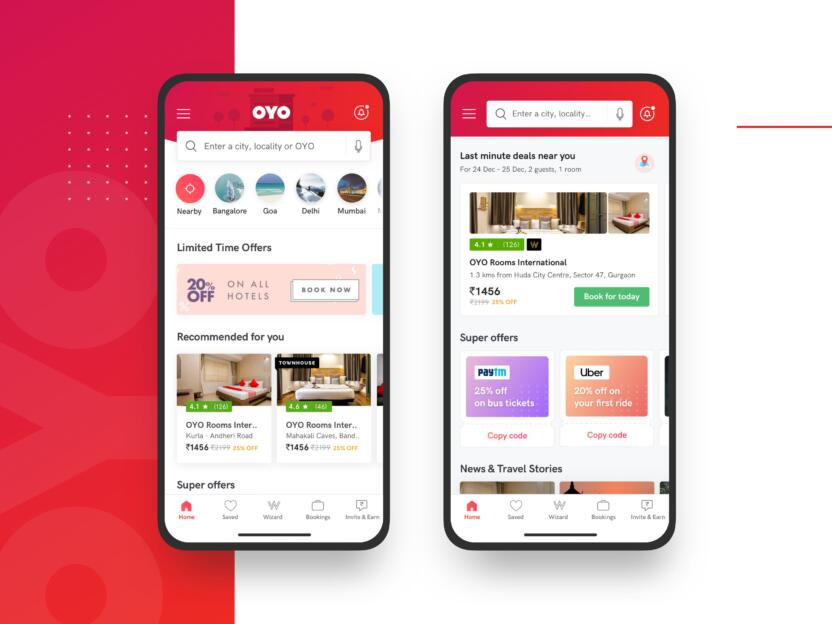
Image Source: Dribbble
OYO is a hospitality unicorn that has about 1800 hotel properties located across 500 cities. Their customer experience was highly fragmented, with customers searching for rooms online using mobile, scouring social media for reviews, making additional inquiries through email, and (finally) completing the booking through the website or mobile app.
And with a lack of omnichannel insights about customer behavior, the product recommendations they served customers were generic and failed to hit the mark.
Charged with omnichannel analytics, OYO delivered push campaigns with personalized hotel recommendations that fit the customer’s previous booking habits, accommodation style, and price preferences, leading to higher click-through rates (CTR).
Key Takeaways:
OYO leveraged MoEngage’s omnichannel marketing platform to deliver a seamless experience across their app and website and utilized MoEngage’s Push Amplification feature to achieve a 44% boost in push notification delivery rates. This led to an overall 8x increase in engagement and a 5x increase in click-through rates.
Read our complete case study on how OYO used omnichannel marketing to achieve success.
Leverage These Omnichannel Marketing Examples for Your Strategy with MoEngage
No matter your industry, a multichannel approach is no longer enough. Having many channels that are disconnected simply won’t work. Instead, you need to ensure you’re using the most relevant channels for your customers.
Winning brands understand that an omnichannel approach is crucial to success, as it ensures customers get a familiar experience no matter how they connect with your brand.
As you can see from the myriad of examples above, brands can leverage omnichannel strategies in a variety of ways, depending on their customer demographics and behavior. The ideas above are great inspiration for how brands from all industries can navigate omnichannel marketing.
MoEngage’s Cross-Channel Marketing platform is designed for omnichannel engagement, helping you communicate effectively with customers across all channels from a single, convenient dashboard. Armed with omnichannel analytics, brands can deeply understand customer behavior, no matter their industry.
Schedule a demo to learn how MoEngage can help you power personalized omnichannel experiences and marketing campaigns that drive engagement and conversions.


















